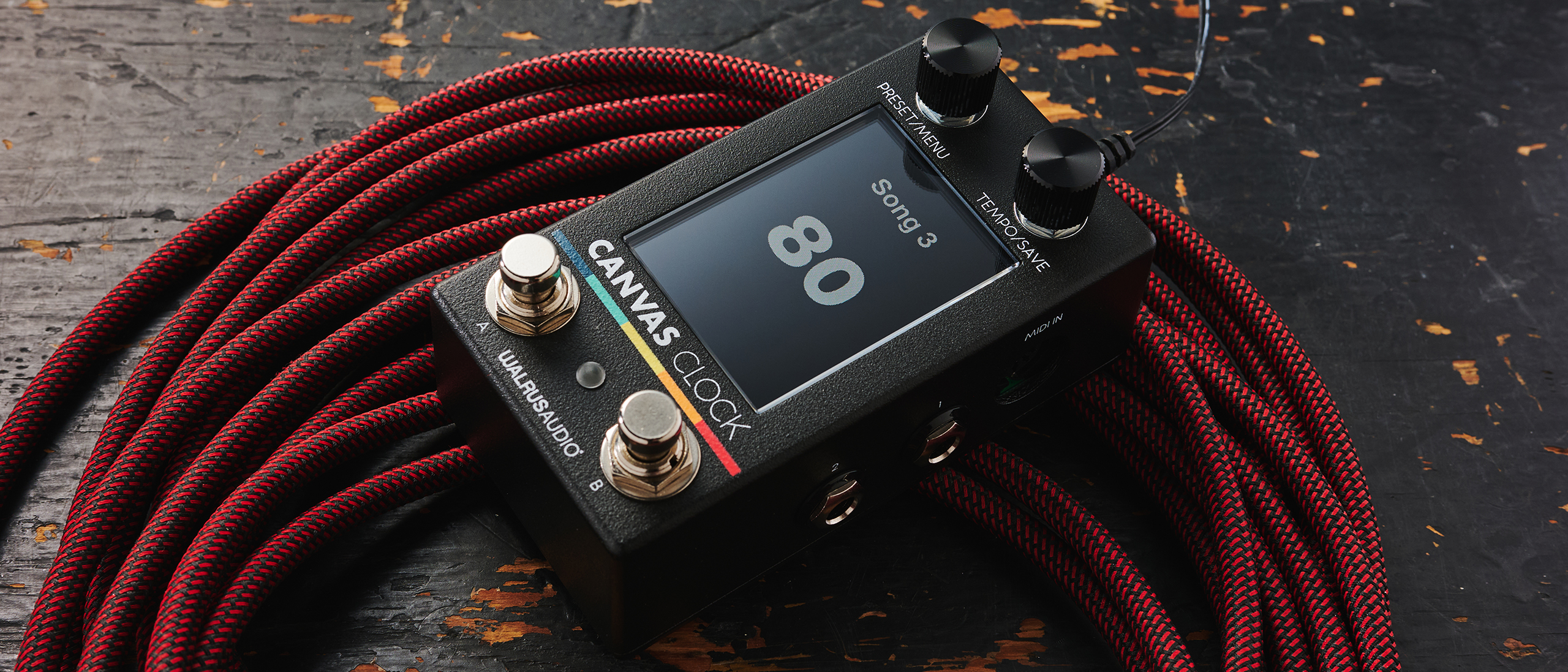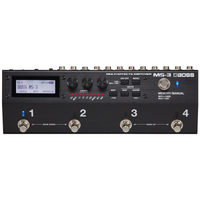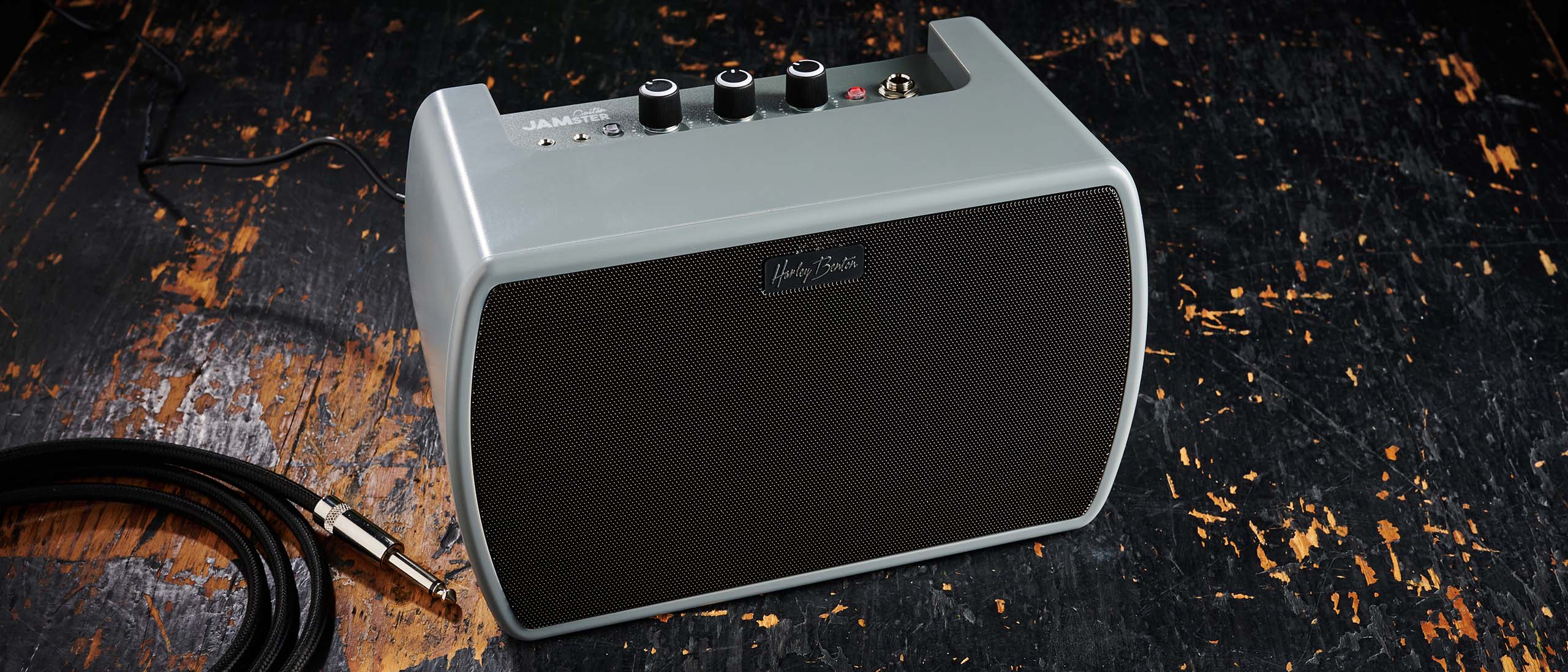Guitar World Verdict
Its niche application might eliminate the Clock from consideration for a lot of players. But the Walrus Clock is deceptively powerful, should you want to leverage the power of your MIDI-enabled pedals without needing a computer or larger MIDI switching device.
Pros
- +
Great user interface
- +
Everything editable on the pedal
- +
Ability to send MIDI PC and CC messages
Cons
- -
Quite niche
- -
Expensive for a utility pedal
You can trust Guitar World
What is it?
The Walrus Audio Clock is a new entry into the brand's Canvas utility line. It's a unique pedal, billed as a MIDI and analog clock device, but in reality that undersells it slightly.
It combines the jobs of MIDI clock and converter, additionally bundling the ability to send MIDI control and program changes.
It is a little short of being a true MIDI switcher, but for simple program changes, there's not many single-box options in the market to match it. Put simply, if you're looking to unlock the MIDI functionality of your pedals, read on…
Specs

- Launch price: $299/£299/€349
- Type: MIDI clock and switcher
- Controls: Preset/Menu Encoder, Tempo/Save Encoder, A and B footswitches
- Features: MIDI clock, CV send, tempo sync, MIDI PC/CC send, computer editing suite
- Connectivity: 4x 1/4" jack (TS or TRS), MIDI In/Out (5-pin DIN), MIDI in/out (1/8" TRS), sync (1/8" TRS cable), metronome out (1/8" TRS), USB-C
- Bypass: N/A
- Power: 9V DC Center-negative, 300mA or USB-C
- Dimensions: 65 x 42 x 124 mm
- Options: N/A
- Contact: Walrus Audio
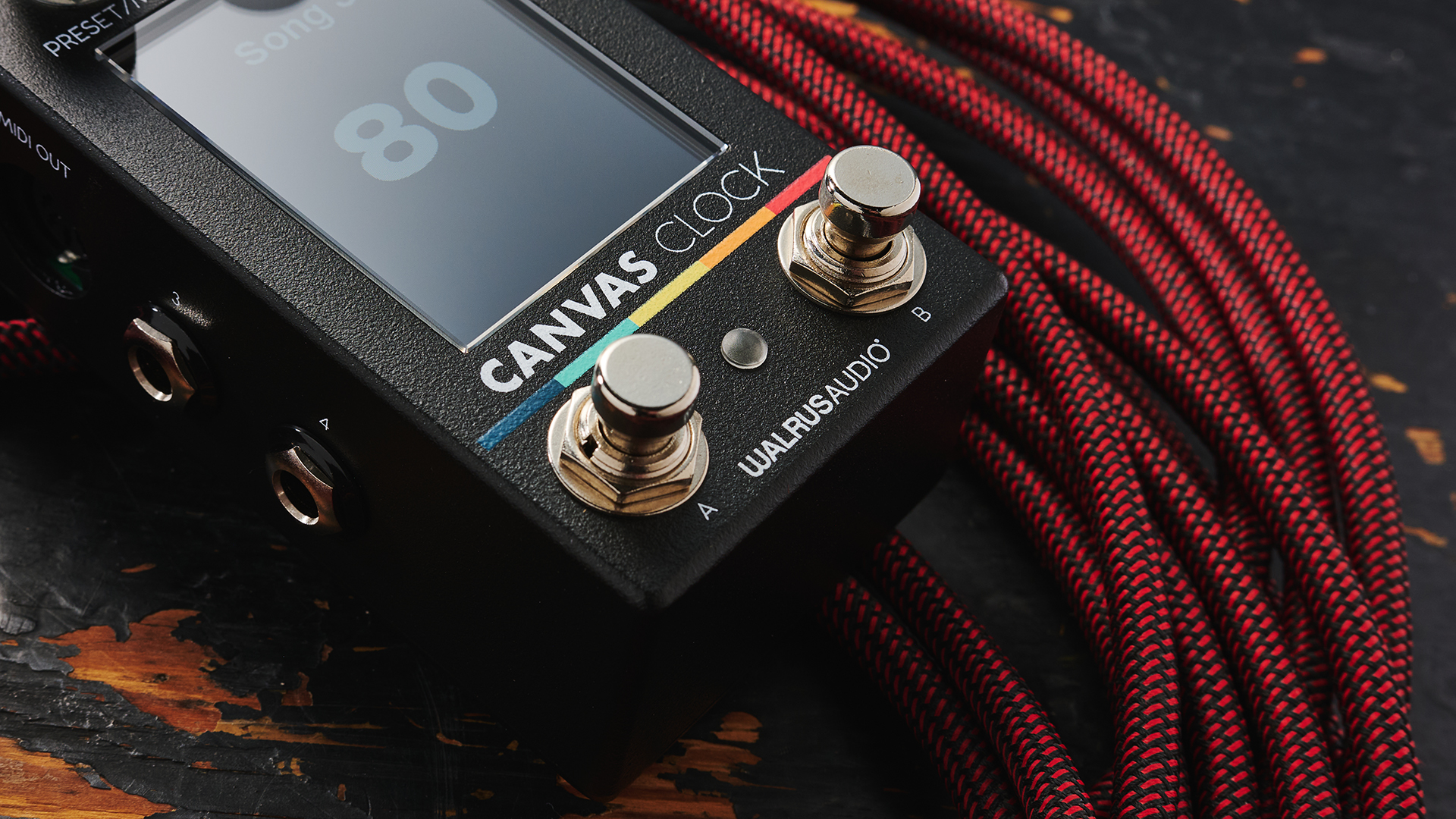
Build Quality
Walrus has always built solid pedals with cool graphics and the Canvas Clock is no exception. On the front it's got a huge, crisp screen, and a nice understated colourway. At a glance, the tempo is shown in large letters that will be clear even from across a dark club stage.
The only potential issue is a minor one with the input placement. To keep a small form-factor, its MIDI ports and power jack are directly soldered to the boards inside. This means there is a small gap between the connectors and edge of the enclosure. It's unlikely, but if a pint of beer or water finds its way onto your board, some could get into the pedal that way.
As a bonus, the pedal can be powered by USB-C, meaning you can simply connect to a computer to edit, rather than having to do it while connected to your pedalboard's power supply.
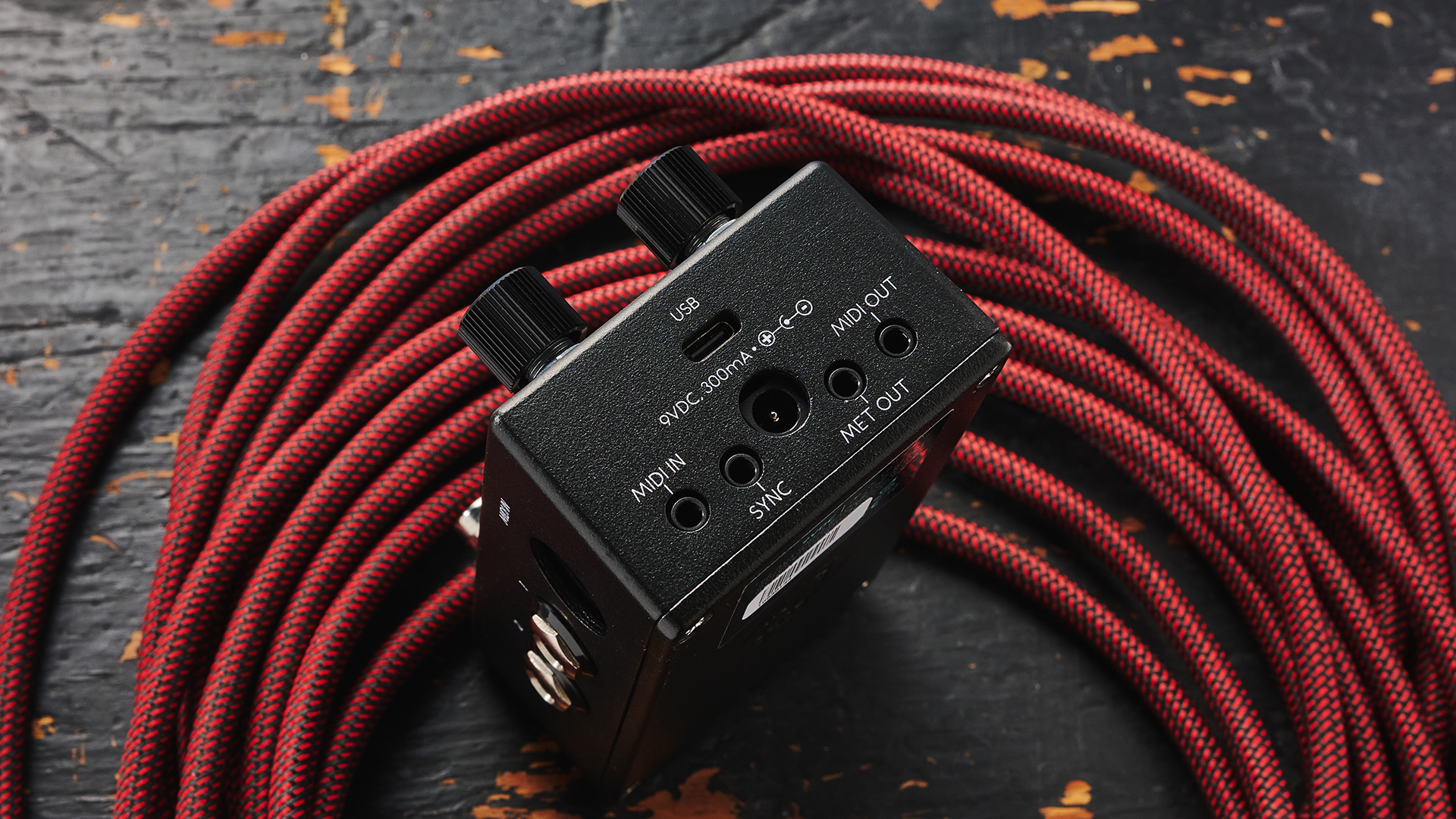
Usability

The Clock is overflowing with connection options. There's mini jack MIDI in/out, standard MIDI in/out, and four 1/4" jacks. Each of the 1/4" jacks can send tempo out, either as analog or MIDI, control voltage, or switch/expression in, so that it can be controlled by an expression pedal.
As well as the outs, there's ins for accepting BPM from an external source (via the sync jack) as well as the expected MIDI in. The sync out can be used for external devices like Eurorack, and as mentioned it can send CV for synths.
One of the key selling points of this pedal is whether or not it can eliminate the need for a laptop. The Clock has a web editor, and can be hooked up to a computer via USB-C for an easier editing experience, but all the functionality is available via the pedal.

Luckily for those that are averse to faffing with a computer, the Clock has a large screen for editing and two push rotary knobs. As a result, while editing is easier using a computer, it's perfectly possible to edit presets and advanced functionality on the pedal itself. The only features that are on the fiddly side are the ones you would expect, naming songs and sets, and editing macros.
The naming conventions are straightforward. What elsewhere might be called a 'scene' or 'preset' is called a 'song' here, and they're grouped into 'setlists.'
Luckily for those that are averse to faffing with a computer, the Clock has a large screen for editing and two push rotary knobs.
It's probably the macro functionality, sending MIDI CC or PC messages when a song is recalled, that will be the key selling point to power users. 128 macros are available with 15 messages per macro, meaning you can use song changes to turn off and on pedals, switch presets or settings as well as simply change MIDI clock tempo.
Verdict
Verdict: ★★★★½
As a MIDI clock, it's hard to justify the substantial price-tag, even if the form-factor is compact, and the user interface good. However, the ability to use this as a midweight MIDI brain for a gigging setup is what makes it somewhat unique. This does however beg the question of who the pedal is for.
A larger touring band is likely have a MIDI rig driven by laptops and switchers, while this is a bit more complex than 'grab and go.' As a result, its audience appears to be regularly gigging guitarists with several MIDI-enabled high end pedals on their 'board that nevertheless value compactness. Maybe that's a bigger niche than I think; if that describes you, then you're in luck.
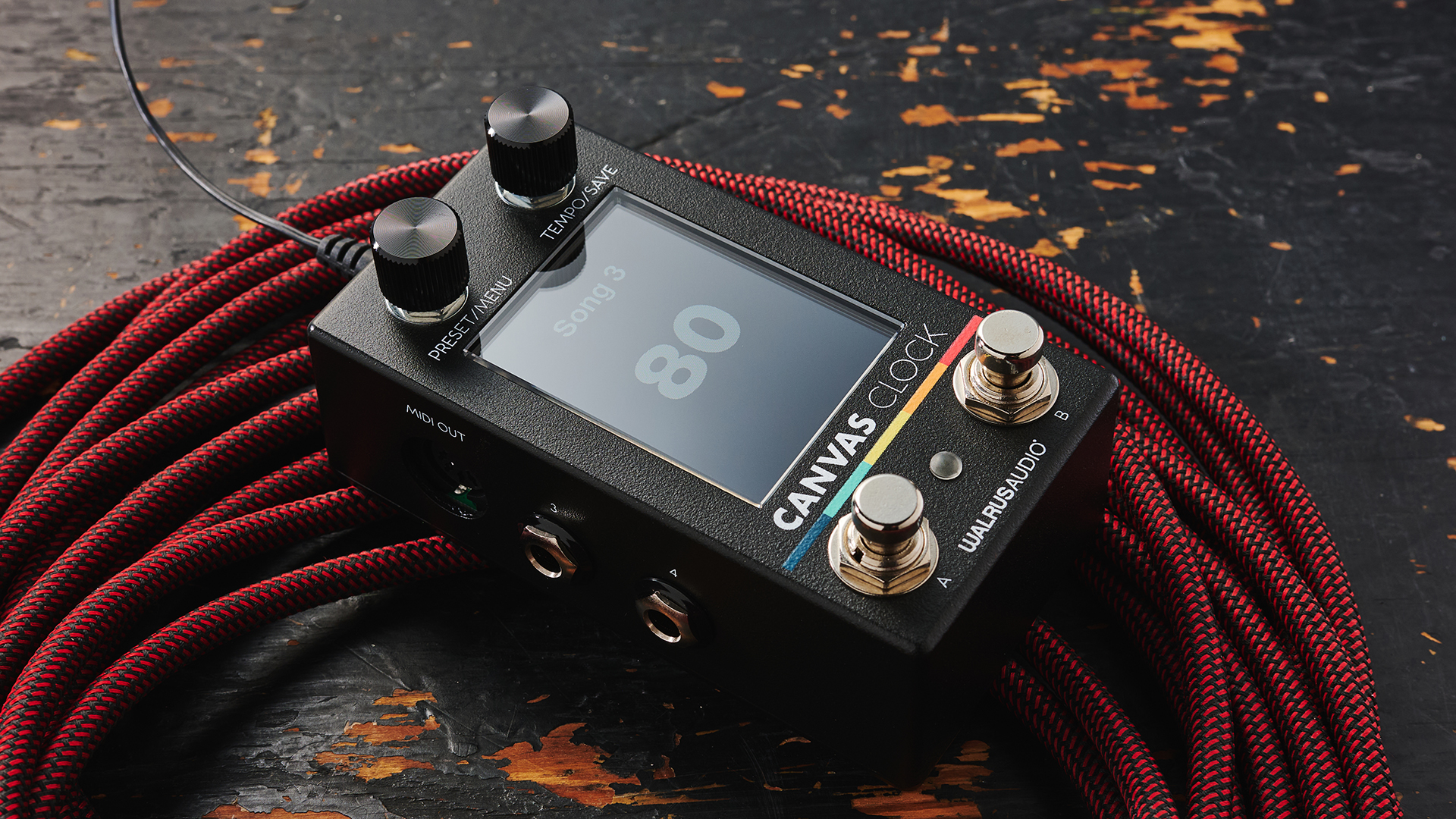
Still, for most guitarists, this pedal is likely to be one of those 'don't need it…until you do' types of purchase. Even with two MIDI-enabled time-based effects on your pedalboard, justifying the money and space for a clock would be difficult. However, as a source for MIDI control messages as well as clock, it's easier to justify.
Guitar World verdict: Its niche application might eliminate this from consideration for a lot of players. But the Walrus Clock is deceptively powerful, should you want to leverage the power of your MIDI-enabled pedals without needing a computer or larger MIDI switching device.
Also try
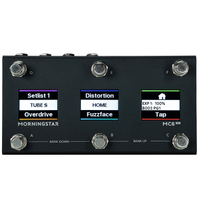
Morningstar MC-6 Pro
Price: $349/£349/€394
For a slight increase in price and size, you can have a full-fat MIDI switcher with more footswitches, but the same number of connection ports.

Disaster Area micro.clock Gen 4
Price: $169.99/£169/€149
If all you need is MIDI clock and CV, the micro.clock is cheaper, has two outputs and can even send a MIDI PC message, but it only has a single footswitch.
Boss MS-3 Multi Effects Switcher
Price $449/£439/€450
The Boss MS-3 can not only act as a MIDI brain for your rig, but has analogue loops for pedals and a built-in effects engine for building virtual loops using BOSS pedal blocks. It's a complete controller for your whole setup.
Read more: Boss MS-3 Multi Effects Switcher review
Hands-on videos
Walrus Audio
Mark Johnston
Michael W. Westbrook
Alex Lynham is a gear obsessive who's been collecting and building modern and vintage equipment since he got his first Saturday job. Besides reviewing countless pedals for Total Guitar, he's written guides on how to build your first pedal, how to build a tube amp from a kit, and briefly went viral when he released a glitch delay pedal, the Atom Smasher.
You must confirm your public display name before commenting
Please logout and then login again, you will then be prompted to enter your display name.
“We hadn’t really rehearsed. As we were walking to the stage, he said, ‘Hang on, boys!’ And he went in the corner and vomited”: Assembled on 24 hours' notice, this John Lennon-led, motley crew supergroup marked the beginning of the end of the Beatles
“Among the most sought-after of all rhythm guitars… a power and projection unsurpassed by any other archtop”: Stromberg has made a long-awaited comeback, and we got our hands on its new Master 400 – a holy grail archtop with a price to match
“I pushed myself to down-pick faster and make the riffs more aggressive. Maybe it’s the old man in me struggling to feel young and fighting back against aging”: How Killswitch Engage went to thrash metal bootcamp to deliver their face-ripping return
